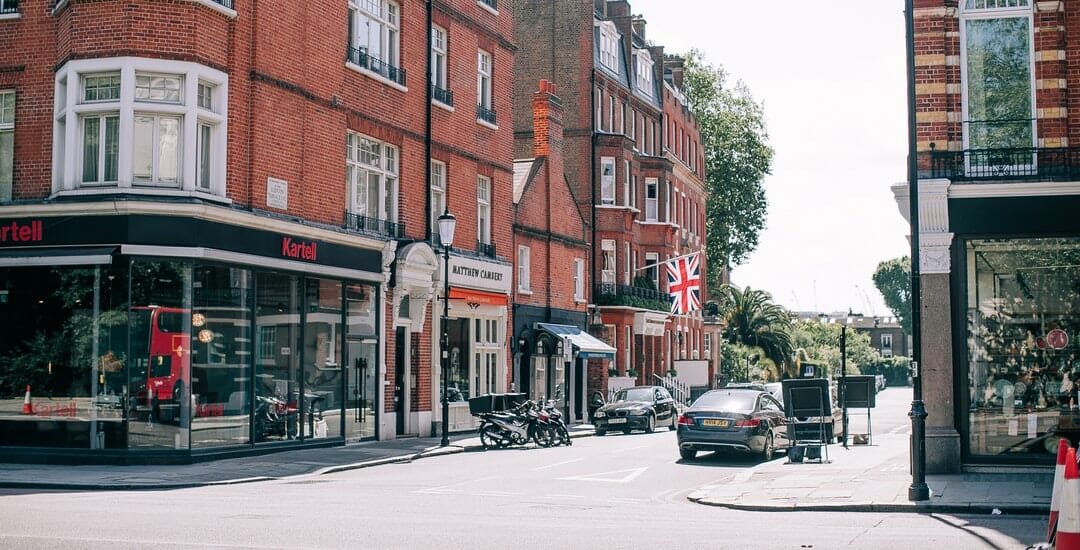Buy to let has been one of the most viable investment options in the UK for the past decades. Generally speaking, if you play your cards right you can become a property millionaire in about 10 years with as little as £200,000 starting capital. This is possible thanks to the introduction of buy to let mortgages in 1996. They made property investment much more accessible to the average person.
Understandably, many people are interested in investing in property for its returns. If you want to set up a healthy second income that eventually allows you to retire early and enjoy life – building a property portfolio can produce some serious profit.
If you’re wanting to create a strong property portfolio for maximum returns, consider the 5 ways to become a property millionaire in the UK.
In this article, you will learn a few tips that can help you become a property millionaire in the UK with the right investments.
Table of Contents
Toggle
Look for long term gain
Property does not allow for “get rich quick” fixes. Investors who have made millions from property do not do it overnight. Buy to let is profitable and can generate an income from day one, but you need patience and perseverance to grow a successful portfolio.
You need to understand that portfolio growth happens steadily and over a long period if you’re not in a position to purchase multiple properties at once. If you start off with one property, you could let the returns accumulate and use that to then fund a second property. You then continue the process when possible for as long as you can.
If you have some cash on hand you can leverage it using buy to let mortgages and invest in multiple properties for a higher return on your initial investment. Over longer periods, house prices tend to increase and that’s where you can visibly see how much your investments have gained. For example, a conservative rise of 4% year-on-year would mean that a property you bought for £100,000 could be worth £131,593 by year 7. This is an impressive gain over a relatively short period. Over that time, you’ll also be benefitting from the capital growth of not just one property, but several. This is in addition to the rental income you would collect during this time. Eventually, your overall return on investment can reach millions.
Tax and mortgage efficiency makes a difference
In 2016, the UK government introduced some tax changes, which had an impact on landlords and buy-to-let investors. However, for investors who invest and manage their portfolios smartly, there aren’t any substantial changes in the long term.
Mortgages remain the preferred way of acquiring new properties and account for a large percentage of successful investments in the UK. When used smartly, they allow landlords to put down minimum deposits on certain properties and leverage their small startup capital to boost their portfolios. You can then spread your cash across several properties to gain bigger. If you need further financial advice, it is best to consult with a financial advisor and compare mortgage brokers to better understand the process and how it will affect your property journey.

Choose the location wisely
Location is the most vital component when it comes to buy to let. It cannot be stressed enough how much of a difference it can make to the interest in your property and your profit from it. Some cities like Manchester, Liverpool, Birmingham and Leeds have consistently topped the list for buy to let hotspots for many years. This translates to high yields and house price growth for landlords and investors.
Buy to let investors often make the mistake of believing that the city with the highest house price rises automatically equals the best investment. But when we look at London and other areas of the south, this could not be further from the truth. Property investment is the sum of tenant demand, rental yields and capital growth. Many up and coming urban cities in the north are brimming with potential and offer all these at an affordable price to investors.
In the south, however, prices have hit such heights that they have become unattainable for the average investor. As a result, yields have plummeted and tenants are looking for cheaper alternatives. Keep this in mind when you’re looking for the most profitable properties to add to your portfolio.
When you’re looking to build a property portfolio, you can consider the different avenues for sourcing properties. Banks, receivers, auction houses, builders and developers are all viable options. Some deals are exclusive and you have to act fast to not miss out on the opportunity. For that reason it makes sense to keep some cash on hand.

Research and have patience
It’s vital to assess all the pros and cons of an investment. Research the market and the demand for rental properties in the area where you want to buy. Speak with local letting agents before diving into buy-to-let investing, as you could put yourself in a position where you are forced to sell. Also look at the information that could affect the investment of the property such as: knowing about the local schools, types of shops in the area, transport, tenants and nearby towns.
Sometimes, the property you acquire needs a bit of work. Down the line, one of the best ways to make money out of a property is to add value to it. For example, you can convert a maisonette with a loft conversion or convert a garage into another room. According to a Zoopla survey this can add 20 percent to the value of a property.
Part of your due diligence process should be visiting local planning applications on local authorities’ websites for any indication of which areas will have the potential for a strong long-term investment.
You will notice that any planning permission which has been granted for major housing schemes will often have an evident ripple effect years before the developments have actually been built.
Determine your tenant base
Not all cities in the UK cater to the same tenant base. Some like Edinburgh and Glasgow appeal to both students and young professionals while smaller, quaint towns up North are in demand among older people looking for peace and quiet. If you want to invest in high-income properties, then you need premium-quality, low-cost shared accommodation for working professionals.
With the right tenants, converting a single-occupancy property into one HMO will lead to significant capital gains, covering the refurbishment costs with plenty to spare.
Overall, it makes more sense to invest in flats rather than houses as they generate better returns. Flats and apartment buildings make better buy-to-let investments. The more flexible your budget is – the better so try to stretch it to a two-bedroom, two-bathroom flat, if possible.
You’ll find that the wealthiest property investors prefer to buy commercial real estate or multifamily properties. These types of properties will generate more income, and a 5% increase in value on a £1 million property will earn you a lot more money than a 5% increase in the value of a residential property.

Why you should consider investing in property in the UK
As with stocks and shares, a diverse property portfolio is the best way to invest as it is always better to have more than one property to fall back on.
Once you buy one property, the cash flow and equity make it easier to buy a second one and so on. This pattern continues as you acquire more real estate. The larger your real estate portfolio is, the better protected you are from the losses you’ll experience on certain deals.
Becoming a property millionaire in the UK is not impossible. It may not be an easy goal to achieve but know that you can make it happen. Gaining the right knowledge, making a plan, and being persistent in your plan to become a millionaire in real estate are key to real estate investing success.


